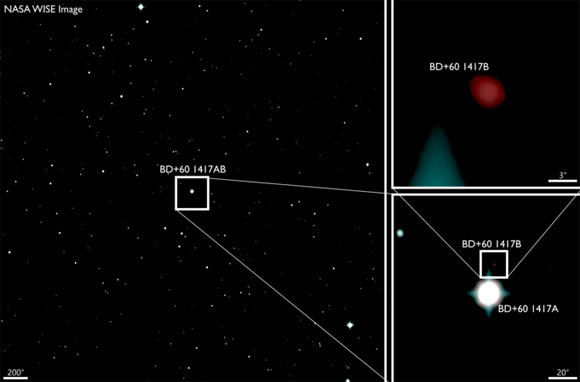A campaign to search for extraterrestrial companions has led scientists to a perplexing object with a mass 15 times that of Jupiter.
According to Sci-News, the research team, led by Dr. Jackie Faherty from the American Museum of Natural History, co-founded the project “Backyard Worlds: Planet 9”. The object, designated W1243, is a companion body orbiting a young K0 star named BD+60 1417, located approximately 146 light-years away in the constellation Ursa Major.

Image of the BD+60 1417 star system – (Photo: Léopold Gramaize / Backyard Worlds: Planet 9 project)
This object orbits very far from its parent star, at a distance of about 1,662 times that between Earth and the Sun, showing signs that suggest it is a planet.
However, it has a mass 15 times that of Jupiter, while one of the criteria for distinguishing between a planet and a brown dwarf is a mass greater than 13 times that of Jupiter.
Brown dwarfs are objects that resemble failed stars because they cannot initiate the nuclear fusion necessary to become stars, yet they are more complex than planets. They are typically much smaller than stars but significantly larger than planets.
One characteristic of brown dwarfs is that they are “born from nothing,” meaning they seem to form directly from the molecular cloud where they reside, similar to stars, rather than from the protoplanetary disk of a star.
The newly discovered object is too massive to be classified as a planet, yet it has a parent star, making it unlikely to be a brown dwarf. Scientists believe it to be a “monster” planet, unusual and somewhat “superior” to typical planets like Earth or the gas giant Jupiter.
According to Dr. Faherty, they are continuing to explore possibilities, and if W1243 can be confirmed as a planet, it will help expand the definition of a planet as well as the range in which one might find a planet orbiting distant stars.
The study was recently published in the scientific journal Astrophysical Journal.


















































